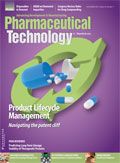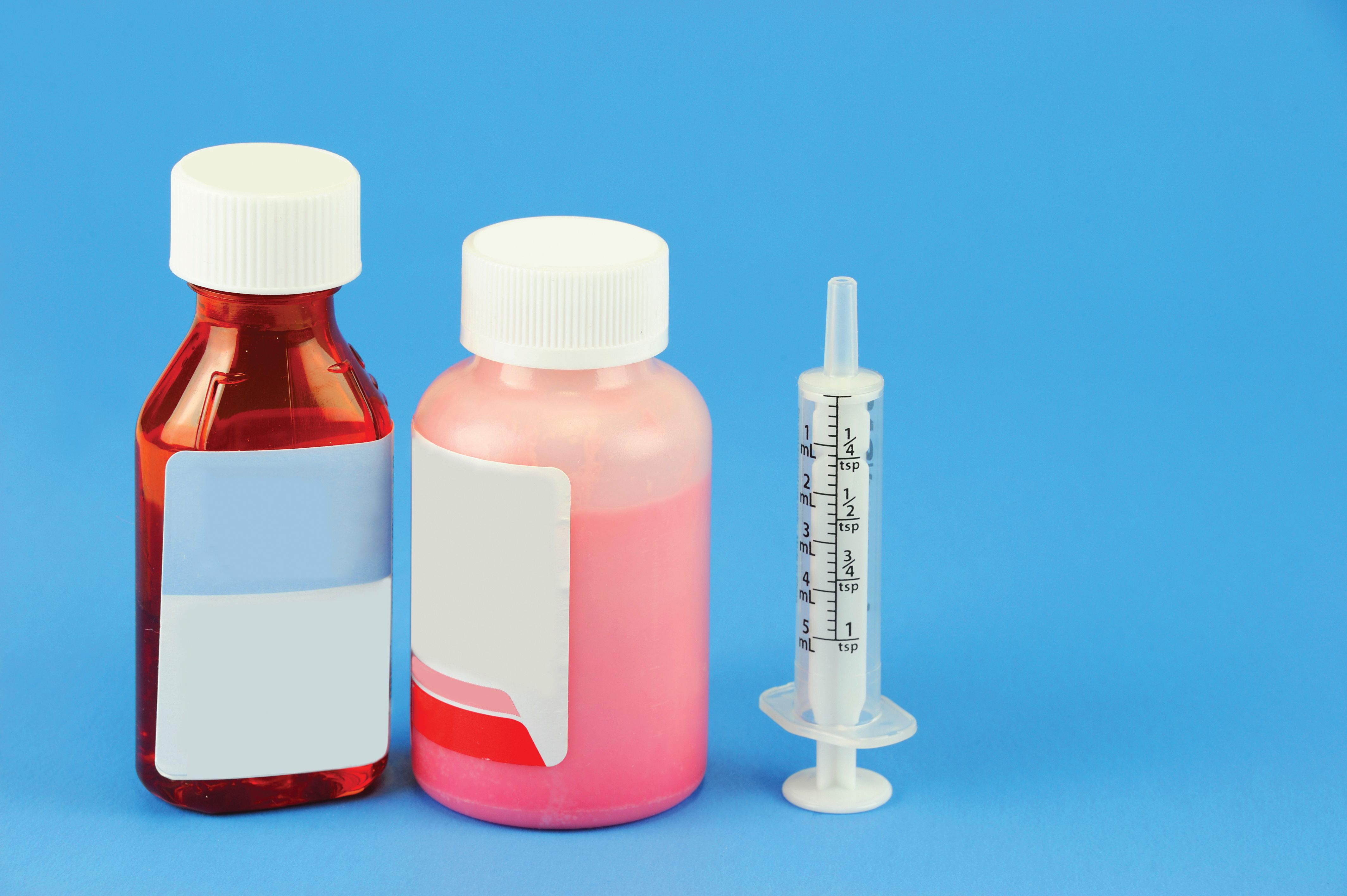News
Article
Pharmaceutical Technology
Can Pharma Defy Gravity at the Patent Cliff?
Author(s):
Pharmaceutical companies are using formulation strategies as a lifecycle management tool to maximize product value and preserve their revenue streams.

Generic-drug competition has become increasingly aggressive, especially in an environment where healthcare policies are placing stronger emphasis on pharmacoeconomics and demanding better treatment outcomes at a lower cost. A 2012 analysis by IMS Health estimated that patent expiries will reduce brand spending in developed markets by $127 billion through 2016 (1). With drug-development expenditures escalating at an alarming rate while R&D productivity continues to decline, branded drug-makers are under pressure to maximize the value of their products throughout their lifecycles.
“Although the development of new drugs to address unmet patient needs remains the single most important goal of any pharmaceutical company, effective lifecycle management (LCM) is invaluable for getting the greatest possible value from existing brands,” says Anil Kane, PhD, executive director and global head of formulation sciences, Patheon.
“The challenge, however, is in the development of creative and unique strategies that will generate intellectual property and provide additional mid- to long-term exclusivity for the product,” notes Ninad Deshpanday, PhD, president, R&D, Cirrus Pharmaceuticals, a Kemwell company. “The competition among innovators developing similar strategies has increased, and generics have become smarter; therefore, the window to succeed with novel lifecycle products has become much narrower today.”
LCM strategies include identifying new indications, developing modified formulations, finding new routes of administration, combining more than one drug into a single product, producing the drug as a single enantiomer if the original drug substance was a racemic mixture, and switching from a prescription product to over-the-counter (OTC) status, among others. According to Kane, the key issue facing pharmaceutical companies is the selection of one or more of these LCM options by understanding the opportunities and competitor landscape, potential return on investment, and the ability of timely implementation. “Adopting a proactive LCM strategy, such as line extension into pediatrics, changing the dosing regimen by using modified-release formulations or improving clinical benefits and patient compliance by combination products, can offer a broad patent coverage and enhance the value of the brand,” Kane adds.
Thomas Hein, PhD, director of sales & business development, at Hermes Pharma, emphasizes that LCM should start as early as possible and be part of an overall product portfolio strategy. “However, from our experience, most companies tend to consider line extensions after the product has been marketed for several years with the aim of prolonging the product lifecycle when it is under threat or when looking to target new customer segments such as children or the elderly.”
Formulation strategies
Over the years, pharmaceutical companies have found formulation strategies to be an effective LCM tool in preserving revenue streams following patent expirations of their blockbusters. “Formulation strategies fall into two core groups based on their target patient populations,” says Neal Hansen, managing director of the consulting firm Hansen Strategy. “Switch-and-grow formulations seek to bring improvement to core user populations, for example, greater convenience, better compliance, improved outcomes, and/or reduced side effects. These formulations will typically need to compete head-to-head with generic versions of the original formulations and, therefore, must deliver demonstrable advantage to drive switching and minimize back-leakage. Examples of the switch-and-grow strategy include once-weekly bisphosphonates for the treatment of osteoporosis, once-daily attention deficit hyperactivity disorder agents and new device/formulation combinations in diabetes, asthma, chronic obstructive pulmonary disease, and inflammatory diseases.”
“Expand-and-grow formulations seek to unlock either new or unsatisfied patient pools that are not well addressed by available market formulations. As such, these approaches are already well differentiated from the original, generic-threatened formulations, and therefore, have a degree of competitive protection although such approaches offer no protection to the mass-market side of the business,” continues Hansen. “Classic examples of this approach include pediatric and geriatric formulations, fast-melts for ‘on-the-go’ patients, and intravenous/intramuscular forms for acute use in hospitals.”
Modified-release formulations
Developing and patenting new modified-release formulations, which include controlled-release, sustained-release, extended-release, and long-acting preparations, has been a route favored by pharmaceutical companies in their quest to extend the lifecycle of their products. These formulations are mainly designed to increase the duration of drug action by providing a gradual and continuous release of a drug substance from its dosage form, and thereby, decrease dosing frequency. The advantages of modified-release drug delivery include enhanced patient compliance, improved treatment efficacy, and a lower incidence of adverse reactions due to more uniform drug levels in the blood or plasma, among others.
A well-known case is with Pfizer’s cardiovascular drug, Procardia (nifedipine), when it lost its patent. Pfizer went on to introduce Procardia XL, an extended-release formulation designed for once-daily administration as opposed to three times a day with the conventional tablet. The improved formulation consists of a semipermeable membrane surrounding an osmotically active drug core. The drug core is divided into two layers: an active layer containing the drug and a push layer containing osmotically active but pharmacologically inert components. Once ingested, water enters the tablet and the increased pressure in the osmotic layer pushes against the drug layer, releasing the drug through a laser-drilled orifice at a constant rate over 24 hours (2).
Another LCM example is Bristol-Myers Squibb’s extended-release formulation of its oral antihyperglycemic drug, Glucophage XR (metformin), which permitted once-daily dosing (instead of twice-daily) in the management of Type II diabetes. Glucophage XR consists of a dual hydrophilic polymer matrix system. Metformin is combined with a polymer, which controls drug release, to form an inner phase. This inner phase is then incorporated as discrete particles into an external phase of a second polymer. Following administration, gastrointestinal fluids enter the tablet, causing the polymers to hydrate and swell, thereby releasing the drug slowly by diffusion through the gel matrix. Drug release is independent of pH, and the hydrated polymer system is broken down by peristalsis of the gastrointestinal tract (3).
Similarly, after the patent of Eli Lilly’s blockbuster antidepressant drug, Prozac (fluoxetine), expired, the company developed a once-weekly sustained-release formulation. Prozac Weekly capsules contain enteric-coated pellets that resist dissolution until the lower region of the gastrointestinal tract where the pH is more than 5.5. The enteric coating delays the onset of absorption of fluoxetine for 1 to 2 hours compared with the immediate-release formulations (4). Compliance with the weekly formulation was better than with once-daily fluoxetine (5).
Janssen Pharmaceuticals also used modified-release formulations to optimize product lifecycle by introducing a once-daily paliperidone palmitate tablet (Invega) and an extended-release injectable suspension for intramuscular use (Invega Sustena), administered once every four weeks, for the treatment of schizophrenia. Invega Sustena incorporates Alkermes’ proprietary technology for nanoparticles. Janssen is now developing a three-month depot injection, and in June 2012, the company initiated a Phase III trial to evaluate the efficacy, safety, and tolerability of the three-month formulation (6).
Combination products
Combining two or more drugs into a single solid dosage unit and marketing it as a whole new product is also becoming increasingly popular as an LCM strategy to extend intellectual property and minimize generic exposure of mature brands. “According to a recent study from IMS Health, about half a trillion dollars could be avoided by improving the use of medicines, which equals to 8% of annual total healthcare costs worldwide,” comments Stefania Barzanti, marketing manager at IMA Active. “These costs are due to many reasons, but nonadherence to prescription regimen and mismanaged polypharmacy account for more than 60% of this avoidable cost opportunity. This is where fixed-dosed combinations (FDC) can offer convenience to patients and encourage compliance and adherence with their medications. At the same time, FDCs allow product differentiation and containment of generic exposure for mature pharmaceutical products.”
For example, Eli Lilly launched Symbyax (olanzapine and fluoxetine) as a means to stall sales erosion following the patent expiry of its antipsychotic blockbuster, Zyprexa (olanzapine). Merck & Co. also pursued this strategy with the development of Fosamax Plus, which is a combination of a bisphosphonate and vitamin D for the treatment of osteoporosis in postmenopausal women, and Juvisync, the FDC formulation of the cholesterol-lowering agent, simvastatin, and the antidiabetic drug, sitagliptin. Other examples include GlaxoSmithKline’s combination treatments for HIV, Combivir (lamivudine and zidovudine), Trizivir (abacavir, lamivudine, and zidovudine), and Epzicom (abacavir and lamivudine); and Gilead’s Truvada (tenofovir and emtricitabine).
FDCs can be developed in different forms, for example, layered tablets, hard gelatin capsules filled with multiple products or multiparticulate tablets, formed through the compression of multiparticulates. In terms of formulation considerations for FDCs, Barzanti explained that the first issue is the challenge of bringing together different pharmacokinectics and target release profiles, which becomes more complex with higher number of actives. “From the manufacturing point of view, however, one of the most common challenges is combining two chemically incompatible actives that need to be kept separated but included in a single dosage form,” says Barzanti. “This issue is particularly crucial for layered tablets, where sometimes, an
intermediate placebo layer has to be placed to avoid any interaction. Constant check and frequent replacement of the scraper blade are of the utmost importance to avoid the mixing of the different powders comprising the various layers.”
Another critical issue for all forms of FDC is the in-line control of the single dosages of each drug. “In a layered tablet, the single layers can be sampled and checked individually but it is not possible to check them separately in the final complete unit dose,” notes Barzanti. “On the contrary, manufacturing of FDC in hard gelatin capsules can be easily achieved through subsequent filling unit, and many technical solutions are available for in-line check of each drug dosage.”
Fast-dissolve formulations
Recently, there has been a growing interest in user-friendly dosage forms, particularly formulations that dissolve quickly in the mouth without water as they eliminate the need to swallow pills. “User-friendly medicines are easier to take, taste better, and can reduce the number of doses required in a day,” says Hein from Hermes Pharma. “These are factors that attract the interest of
patients. Adherence is still a major problem today, limiting the effectiveness of treatments, and anything that makes administration easier has the potential to offer significant benefits.”
“Applications of fast-dissolve formulations are expanding across therapeutic areas,” observes Steve Hamlen, global group product manager, Catalent. For example, conventional selegiline tablets had to be taken more than once daily. Not only did the conventional formulation have less than optimal efficacy, but it also presented a safety risk due to first-pass metabolite formation. The fast-dissolve formulation of selegiline, Zelapar, developed using Catalent’s Zydis orally disintegrating tablet technology, is absorbed buccally, thereby, avoiding first-pass metabolism and significantly reducing the potential for side effects. The ability to disintegrate in less than 3 seconds allows for increased bioavailability and a faster onset of action for Zelapar. The maximum blood levels of the drug (Tmax) were achieved in 15 minutes for Zelapar compared with 1 hour for the conventional selegiline pills. Moreover, dosing frequency could be reduced (i.e., 1.25 mg or 2.5 mg once daily compared with 5 mg twice daily for the conventional formulation).
“In one recent case, we were asked to redesign a life-saving medication that required delivering large quantities of the API. The original medication is administered as multiple tablets taken three times a day,” says Hein. “We reformulated the medicine from a series of solid tablets into three single packages of orally disintegrating granules, allowing us to encapsulate more API per dose, and therefore, simplify the treatment regimen. This innovation not only improved patient compliance but also provided our client with the opportunity to extend patent protection as the new formulation significantly improved the product.”
Conclusion
In the past, drug-makers have only dedicated modest resources to their off-patent strategies but the changing landscape of the industry, especially with the increasing focus on value, budget management and outcomes in today’s healthcare systems, means that LCM is essential for sustained revenue generation and margin improvement. “The future for successful formulation strategies will most likely lie in hypersegmentation as with the much-hyped death of the blockbuster. Companies that can hypersegment their markets and deliver solutions to the specific needs of different patient and healthcare professional groups will be those that succeed,” comments Hansen. “To win will require both a level of true market insight and continuing innovation in the formulation and services sector to optimize product performance.” With fewer compounds in the development pipeline and more products edging towards the patent cliff, strategies that can extend the commercial life of mature brands are crucial to the success of pharmaceutical companies.
References
1. IMS Institute for Healthcare Informatics, “The Global Use of Medicines: Outlook Through 2016” (Parsippany, NJ, 2012).
2. Pfizer, “Procardia XL, accessed Oct. 16, 2013.
3. Bristol-Myers Squibb, “Glucophage and Glucophage XR,” accessed Oct. 16, 2013.
4. NIH website, “Prozac Weekly,” accessed Oct. 16, 2013.
5. E. Clerk, J Clin. Psychiatry, 62 (suppl 22) 43-47 (2001).
6. Alkermes, “Invega Sustenna Three-Month Formulation of Paliperidone Palmitate Enters Phase 3 Clinical Program for Schizophrenia,” Press Release, June 12, 2012.
Newsletter
Get the essential updates shaping the future of pharma manufacturing and compliance—subscribe today to Pharmaceutical Technology and never miss a breakthrough.




